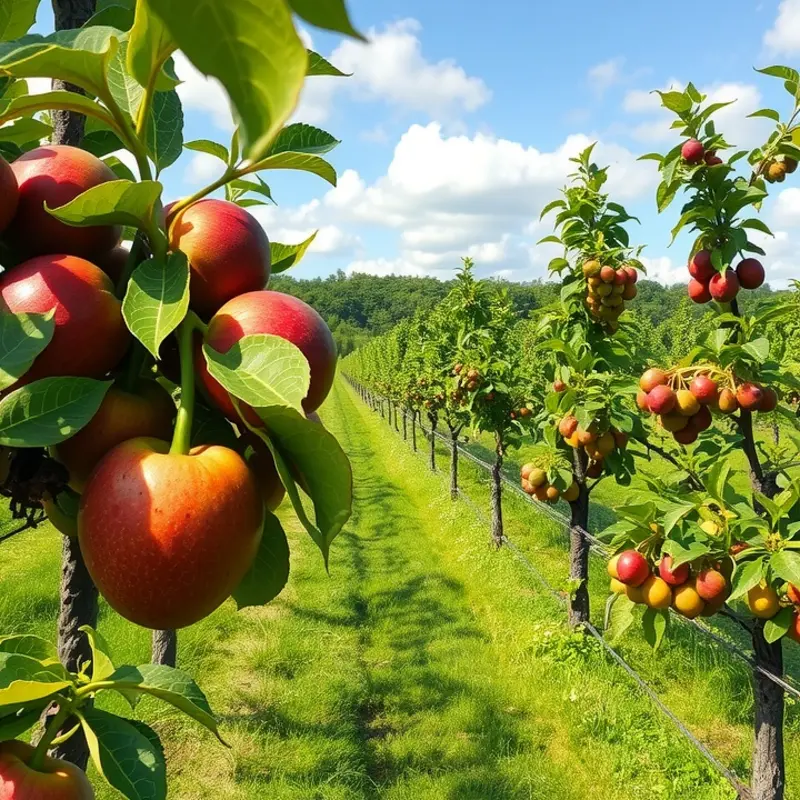Making the switch to sugar-free baking doesn’t have to be daunting. With a variety of substitutes available, home cooks can easily create delicious treats while maintaining healthy lifestyles. This guide offers a comprehensive look at filling your pantry with sugar alternatives, allowing you to enjoy your favorite recipes without the added sugars. Explore the benefits of these substitutes and gain the confidence to experiment creatively in the kitchen.
Understanding Natural Sweeteners

Natural sweeteners offer a fantastic way to reduce refined sugar while maintaining delicious flavors in your baked goods. Among the most popular alternatives are honey, maple syrup, and coconut sugar. Each sweetener not only lends its own unique taste but also carries health benefits worth noting.
Honey is a rich natural sweetener derived from bees. It boasts an intense sweetness with subtle floral notes. Beyond its appealing flavor, honey is known for its antioxidant properties and the presence of small amounts of vitamins and minerals. In baking, honey can add moisture and color to your products. For substitution, use 3/4 cup of honey for each cup of sugar. Reduce the other liquids in your recipe by 1/4 cup and lower the oven temperature by 25°F to prevent over-browning.
Maple syrup, harvested from the sap of sugar maple trees, offers a deep, caramel-like sweetness with a distinct woodsy aroma. This natural sweetener is a source of trace minerals and antioxidants. It’s versatile and pairs well with both sweet and savory dishes. To substitute, use 3/4 cup of maple syrup for each cup of sugar. Similar to honey, you’ll need to decrease the liquid in the recipe by 3 tablespoons and may consider reducing the baking temperature slightly.
Coconut sugar is derived from the sap of coconut palm flowers and has a subtle caramel flavor. This unrefined sweetener retains more nutrients compared to white sugar. It’s a rich source of inulin, a type of fiber that can aid digestive health. Coconut sugar can usually be substituted one-to-one for regular sugar, offering convenience without a significant change in consistency.
Each of these natural sweeteners contributes to the depth and complexity of flavor in baked goods and comes with its distinct advantages. For example, if you’re focusing on moisture and color, honey may be your best option. If you desire a robust and slightly spicy undertone, consider maple syrup. When looking for a nuanced caramel taste with added fiber, coconut sugar is an excellent choice.
If interested in further exploring ingredient substitutions, you might find it useful to peruse guides on other flavor enhancers here.
Understanding how each sweetener behaves in baking will empower you to create delightful, lower-sugar treats that cater to your palate as well as your health goals.
Exploring Artificial and Non-Caloric Sweeteners

Artificial and non-caloric sweeteners are transforming the landscape of sugar-free baking. For home bakers wishing to cut calories without compromising on taste, stevia, erythritol, and monk fruit are popular choices. Each sweetener shines in its way, offering unique properties and application versatility.
Stevia, derived from the leaves of the stevia plant, is one of the most recognized natural sweeteners. It’s significantly sweeter than sugar, so minimal amounts are needed. However, it can have a slightly bitter aftertaste, especially in larger quantities. It’s most effective in recipes that require subtle sweetness, such as muffins or brownies. To avoid the bitter note, blend stevia with other sweeteners or ensure it comprises no more than half of the sweetening agent in a recipe.
Erythritol, a sugar alcohol, is favored due to its similar taste and texture to sugar, without the associated calories. Uniquely, it absorbs heat when dissolving, lending a refreshing, cooling effect—an advantage in recipes like mint-flavored desserts. Erythritol is non-fermentable and doesn’t impact blood sugar levels significantly, making it ideal for low-calorie and diabetic-friendly baking. However, it’s essential to note it lacks viscosity, so pairing it with stevia or monk fruit can enhance moist recipes like cakes.
Monk fruit sweetener is an extract from a small melon native to Southeast Asia. It’s prized for its clean, mellow sweetness and absence of aftertaste, making it ideal for delicate baked goods like cookies or teacakes. It holds up well in recipes that require browning, though its cost and availability can be a consideration.
Combining these sweeteners can create a balanced sweetness profile while mitigating their individual drawbacks. A blend often provides a cleaner taste and improved texture in baked goods. Successful use of these sweeteners lies in understanding their properties. For instance, erythritol and stevia together can balance the cooling effect with sufficient sweetness, while monk fruit with stevia can enhance sweetness without introducing any bitterness.
Baking with these alternatives requires adjustments beyond simple substitutions. Moisture content, texture, and leavening may be affected, needing tweaks in the liquid components or additional binding agents. For guidance on balancing flavors without extra salt or sugar, explore flavor boosters without salt.
When experimenting, gradual incorporation of these sweeteners into existing recipes helps fine-tune to your taste preference. Over time, home bakers can craft a sweet yet sugar-free lifestyle, making delicious treats that align with their dietary goals.
Final words
Choosing sugar-free substitutes for baking can lead to delicious and healthier treats without sacrificing flavor or enjoyment. Embrace natural sweeteners like honey and maple syrup, or explore the world of artificial alternatives like stevia and erythritol. Each option offers unique benefits, and understanding how to use them will empower you to modify recipes and create new ones that fit your dietary needs. Experimenting with these sugar-free substitutes can add excitement to your baking adventures and help maintain a balanced lifestyle. Don’t hesitate to turn your familiar recipes into healthier versions and share them with friends and family.







